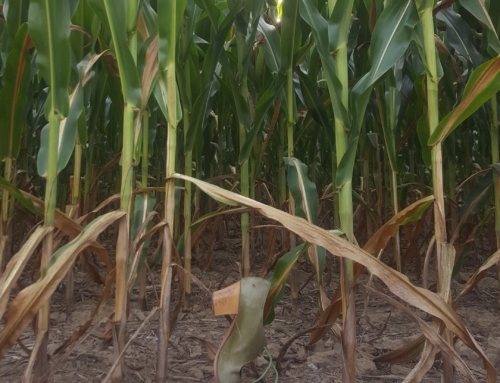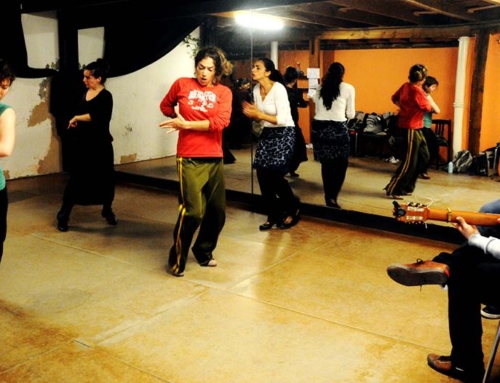In flamenco, there are many different rhythms, known as palos. Within each palo, there can be many variations. This is knowledge that I have found to be lacking in the United States, and something that can really only be understood from being in Spain and learning from artists who understand on a profound level the minute differences between different variations of the same palo. Often these small details are defined by the region from which the variation of the palo comes. For example, there are bulerias de Sevilla, de Jerez, de Utrera, de Lebrija, de Cádiz, etc. It’s not so much the lyrics of the songs that change between variations, but the style in which they are sung and slight differences in the accentuation of the compás or rhythm. It’s EXTREMELY important to be able to differentiate between the styles, because a step that works well for one palo just won’t work with another, which is why listening is so important. You have to understand the music you are dancing to, rather than try and put dance steps on top of music.
Here is a map of Andalucía so you can see the different cities and regions. This map has the three “triangles” of flamenco singing highlighted.
On a side note, each city and region is/was also defined by the type of work that the economy was based on. For example, Jerez has the sherry wineries, whereas Utrera is more agriculturally based, and Cádiz is a sea port and mercantile city.
This is why, in my journey here, I am not looking for pasos or steps. Yes, I sure could use more steps, but not movements that I want to throw in to whatever dance or rhythm. What I am searching for is an understanding of the rhythms, the songs, an ability to listen better, to carry the compás better, to interpret the songs and music justly. These nuances make flamenco what it is, and if flamenco loses these nuances, it loses so much of its depth.
Unfortunately, in my experience in the U.S. there is often no differentiation within the same palo. Bulerias is bulerias. If you want to dance por bulerias, that’s it, you tell the musicians to play por bulerias. The slight variations that exist between different styles of bulerias has been lost when flamenco is/was transplanted abroad, and I think in some ways that’s because abroad there are no regional divisions of flamenco. I’m not saying there aren’t people in the U.S. that have this knowledge, but they are few and far between, and I have never learned any of the distinctions between different styles of the same palo in the U.S. I know that differences exist, but have no way to know what they are or why. That knowledge is not common knowledge outside Spain like it is in Spain. This is why I’m taking cante class here, and why I am studying with teachers who explain these differences. (Today in Manuela Ríos’ class we had a long discussion about the differences between different kinds of bulerías. Which then led to a discussion about how flamenco is losing something because nowadays it’s all about making money, rather than working your job all day, suffering, and then singing/dancing about it at the end of the day.)
In Andrés Marín’s class I’ve been learning a bulerias de Jerez. There are not only certain gestures and styles that are distinct from other bulerias, but even the quantity of desplantes (a specific step) that are used in the dance help define this style. It also has to be counted more in 6’s than in 12’s, since there are many half measures that the dancer/singer/guitarist can use.
Here’s some bulerias de Jerez:
In Manuela’s class, we’ve been learning a bulerias de Utrera, which is not only slower and less non-stop in the dancing, but doesn’t really seem to use what I used to think of as the traditional desplante in bulerias at all. The hand-clapping pattern that is used is also different, which gives the whole air of the dance an entirely different feel.
Here’s some Bulerias de Utrera:
There are many books that explain the differences between the styles within palos, but I think there’s really no way to understand it except through oral transmission. Reading the theory helps you understand “in theory” the distinctions, but that doesn’t mean you can dance and carry out those differences in actuality. What I do need to do though which will help me tremendously, is listen to more of the old singers, who “suckled” a specific style and helped define it wihtout ever mixing it with other styles.
It’s amazing how far I’ve come in my understanding of flamenco music, but I have SO MUCH further to go. I remember the first time I listened to some of the old singers; I couldn’t even understand the words they were singing, much less hear the differences between different palos, or even within the same palo. Learning how to listen is an art in and of itself.
Here’s some bulerias de Cádiz:
And a video of Aurora Vargas singing and dancing por bulerías. Manuela Ríos said Aurora is her favorite dancer por bulerías de Sevilla, even though she is technically a singer and not a dancer.





Leave A Comment